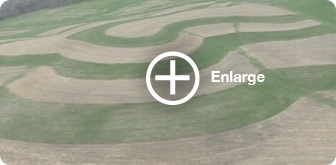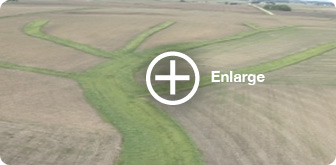SIMPLE PRACTICES… BIG IMPROVEMENT – Page 1
The year-after-year destruction of poorly protected land is made more intolerable because simple conservation practices would make a big difference. Perhaps the simplest but highly effective practice is to place strips of grass or trees strategically in or at the edge of crop fields. Grass strips are called filter strips because they filter out sediment and pollutants running off the edge of the field. Strips of grass or trees planted next to a stream are called riparian buffers. Riparian buffers are a last line of defense — filtering runoff water just before it enters a stream or ditch. Other types of strips can be planted within a crop field. Contour strips are planted, as the name implies, along the contours of a sloping field. Contour strips slow down and reduce the amount of runoff and also filter mud and pollutants out of the water as it flows across a field. Vegetative barriers are very narrow strips of stiff-stemmed vegetation planted across a sloping field to slow the water running down slope, allowing mud and other pollutants to settle out. All of these practices help reduce soil erosion, polluted runoff and gully erosion.
Grass waterways are specifically designed to prevent ephemeral gullies from forming. As the name implies, these strips of grass are planted along the depressions where water tends to collect and begin flowing downhill in a concentrated channel. Planting grass where those channels tend to form stops the water from cutting a gully and helps filter out pollutants.
Figure 12: Simple Solutions Work

 Twitter Updates
Twitter Updates





